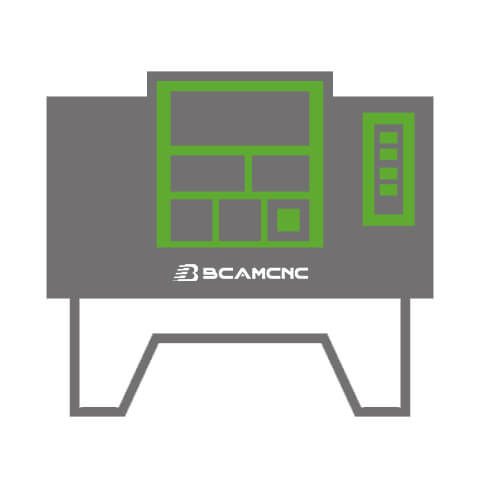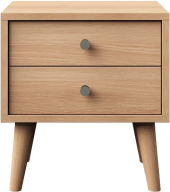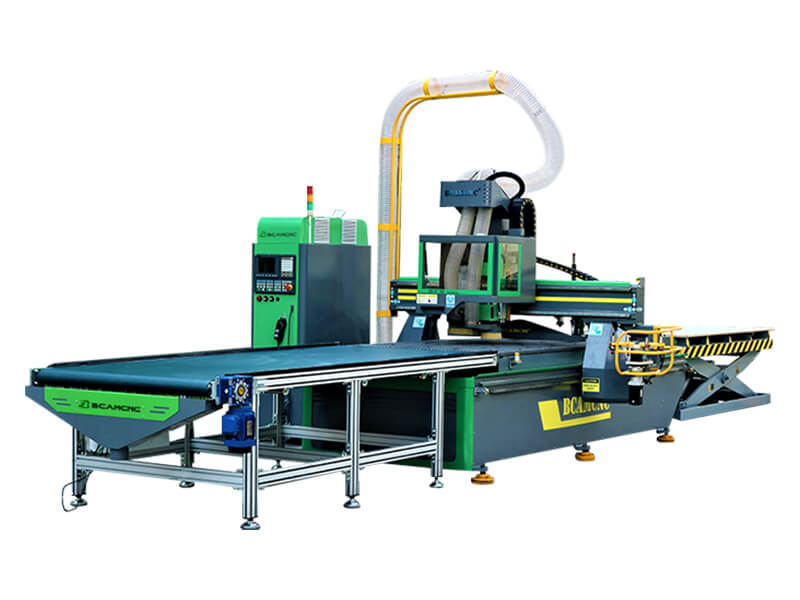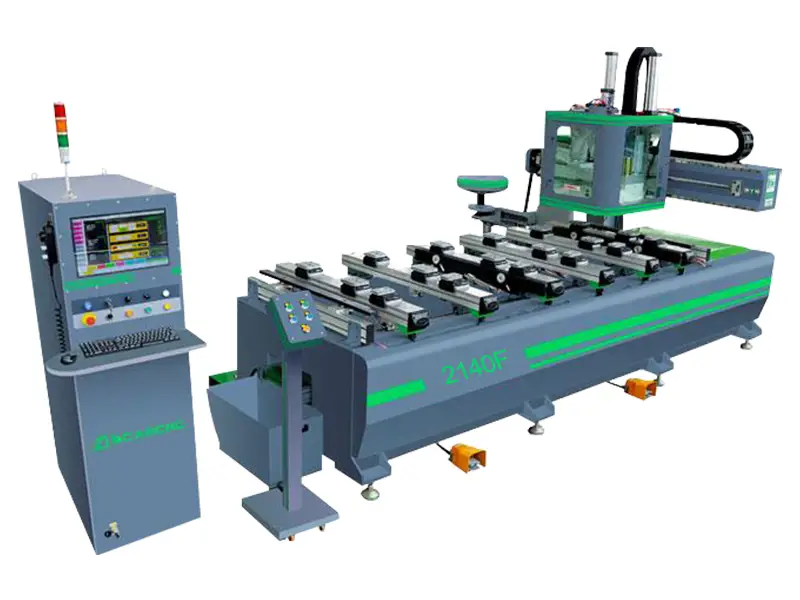Monday To Saturday
8:30 AM - 6:00 PM
High-Precision ATC CNC Routers for Professionals
Reliable ATC CNC Routers for Furniture & Cabinets
BCAMCNC ATC CNC Routers deliver precise, multi-tool automation for demanding workshops.Linear CA/C/EA/E/F and disc-type D series tool changers swap 6–24+ tools in seconds with ≤0.02mm repeatable precision.Handle wood, MDF, plywood, aluminum, acrylic, plastics, and composites—perfect for furniture, cabinetry, molds, routing, and engraving.Multi-axis design and reliable clamping ensure consistent results on complex projects.
$29,000.00 Original price was: $29,000.00.$26,310.00Current price is: $26,310.00.
$45,000.00 Original price was: $45,000.00.$41,200.00Current price is: $41,200.00.
Upgrade Your CNC Router with ATC Technology for Maximum Efficiency
Looking to enhance your woodworking, cabinet making, or furniture production? An ATC CNC Router Machine with an automatic tool changer allows you to perform multi-tool operations—routing, cutting, sculpting, milling, drilling, and grooving—on wood, MDF, plywood, aluminum, and acrylic with unmatched speed and precision. Whether you are a small workshop, fabricator, or industrial manufacturer, ATC technology reduces downtime, shortens auxiliary operations, and ensures high tool repeatability for consistent, high-quality results. Discover the best ATC CNC routers that combine efficiency, precision, and versatility to fit your projects, business plans, and production goals.

Definition of ATC CNC Router Machine for Woodworking and Multi-Material Machining
An ATC (Automatic Tool Changer) CNC Router Machine is a specialized system designed for automated tool transfer, loading, and unloading between the spindle and the tool magazine. Unlike traditional CNC routers that require manual bit changes, ATC systems enable continuous, multi-tool operations for woodworking, cabinet making, furniture production, plywood, MDF, aluminum, acrylic, and other materials.
The ATC system generally consists of a tool magazine and an automatic tool changing mechanism, allowing storage of multiple router bits for multi-step machining of complex parts. By using only a single spindle, ATC routers simplify spindle structure, improve rigidity, and maintain high precision. Automated tool changers reduce mechanical movement, shorten tool-change times, and provide flexible layouts for high-efficiency production in industrial and small workshop settings.
Working Principle of ATC CNC Router for Multi-Material Routing and Cutting
In an ATC CNC router, the tool changer manages the exchange of bits between the spindle and the magazine. Two main methods exist:
1. Relative movement between spindle and magazine – The used tool is returned to the magazine before a new tool is picked up. This sequential action takes longer.
2. Manipulator (robotic arm) tool changer – Simultaneously grabs, loads, and unloads bits from the spindle and magazine, significantly reducing tool-change time.
Manipulator-based ATC systems are widely used due to their speed, flexibility, and simple mechanical design. Movable claws often include self-locking mechanisms to prevent tools from dropping during high-speed operations. This system allows precise routing, sculpting, milling, drilling, grooving, and cutting across a wide range of materials including wood, MDF, plywood, aluminum, and acrylic.
Features & Advantages of ATC CNC Router Machine for Woodworking and Furniture Production
• High-power ATC spindle with large torque for fast, precise routing, milling, and machining.
• High-torque servo motors ensure low noise, high speed, and accurate positioning.
• Flexible tool magazines, standard 8 tools, customizable for larger capacity.
• Enables multi-material processing: wood, MDF, plywood, aluminum, acrylic, and plastics.
• Short tool-change time (typically 2–8 seconds), improving production efficiency.
• Ideal for furniture manufacturers, cabinet making, plywood workshops, and industrial production lines.
Costs of ATC CNC Router Machine for Woodworking and Aluminum Processing
The price of an ATC CNC router machine varies based on working area, spindle power, number of axes, and features:
• Entry-level hobby ATC CNC routers: around $12,000
• Industrial ATC CNC routers with larger worktables, advanced spindles, and multiple axes: $25,000–$100,000+
• Average cost for most commercial ATC CNC routers: approximately $16,000
For upgrading an existing ordinary CNC router with an ATC kit, expect an additional $3,000–$8,000 depending on specifications. Investing in an ATC system allows faster, more precise multi-tool operations for woodworking, cabinet making, furniture, MDF, plywood, and aluminum production, significantly increasing productivity and reducing downtime.
Specifications of BCAMCNC ATC CNC Router Machine
| Specification | Details |
|---|---|
| Brand | BCAMCNC |
| Table Sizes | 4′ x 4′, 4′ x 6′, 4′ x 8′, 5′ x 10′, 6′ x 12′ |
| Axis | 3 Axis, 4th Axis, 4 Axis, 5 Axis |
| Capability | 2D Machining, 2.5D Machining, 3D Machining, Woodworking, Routing, Cutting, Machining, Milling, Drilling, Grooving, CNC Furniture Making, Cabinet Making |
| Materials | Wood, MDF, Plywood, Aluminum, Acrylic, Plastics, Brass, Copper, Foam, Stone, Stainless Steel |
| Types | Entry-Level Hobby CNC Machines, Industrial CNC Routers, ATC CNC Router Machines, CNC Machines for Cabinet Making, Furniture & Woodworking CNC Machines |
| Software Compatibility | ArtCAM, Type3, Cabinet Vision, CorelDraw, UG, Solidworks, MeshCAM, AlphaCAM, UcanCAM, MasterCAM, CASmate, PowerMILL, Fusion360, Aspire, AutoCAD, Autodesk Inventor, Alibre, Rhinoceros 3D |
| Controller | OSAI, Syntec, LNC, Mach3, Mach4 |
| Price Range | $6,000 – $110,000 |
| OEM Service | Customizable X, Y, Z Axis Working Area |
| Optional Parts | Dust Collector, Rotary Device, Vacuum Pump, Servo Motors, Cooling System, HSK or Colombo Spindle, Automatic Tool Changer Magazine |
Types of ATC CNC Router Machines
ATC (Automatic Tool Changer) CNC Router Machines can be classified into three common types, designed to meet different machining needs, tool capacities, and production environments:
1. Linear Type ATC
Linear ATC systems, also called in-line tool changers, are ideal for magazines holding 4 to 12 tools. They provide fast tool change, high repeatability, and are easy to operate. This type is widely used in woodworking, MDF and plywood cutting, and small- to medium-sized cabinet and furniture production.
2. Drum Type ATC
Drum type, also known as CTM or disc type ATC, uses a rotary magazine to store 8 to 20 tools. It allows rapid automatic tool changes during multi-step machining processes and is suitable for industrial CNC woodworking, aluminum cutting, and furniture manufacturing. Drum type ATC is popular for high-efficiency routing, cutting, and milling operations.
3. Chain Type ATC
Chain type ATC is designed for vertical CNC machines with slower tool changing speeds but a very large tool capacity (30+ tools). It is ideal for heavy-duty industrial CNC routers, multi-material machining, and large-scale production of cabinets, furniture panels, and composite materials. This type provides the best flexibility and tool carrying capacity for complex multi-step machining.
How to Change Tools in ATC CNC Router Machines?
1. Rotary Tool Holder (Rotary Post) Method
Rotary tool holders are one of the simplest ATC solutions, often used in CNC lathes or compact router machines. The holder can be square, hexagonal, or disc type, holding 4–6+ tools. Bits are automatically changed according to CNC commands, ensuring high precision. With a robust structure, the rotary holder withstands cutting resistance during rough machining, maintaining repeat positioning accuracy typically between 0.001–0.005mm. The tool change sequence involves lifting, indexing, and pressing the holder. This method is suitable for small to medium-sized wood, MDF, plywood, and aluminum machining.
2. Spindle Head Changing Method
Spindle head tool changers use a turret tool magazine, available in horizontal or vertical designs. Each spindle head comes preloaded with the required tools. When a tool change command is triggered, the turret indexes to position the appropriate tool, engaging only the spindle in use. This automated process reduces manual intervention, saves time, and improves reliability. Turret spindle heads are suitable for ATC routers with limited tool numbers and low- to medium-precision processes.
3. Automatic Tool Changing System with Magazine
For multi-step or complex machining, most BCAMCNC ATC CNC routers use automatic tool changers with a tool magazine. The system includes a magazine and tool changing mechanism, enabling simultaneous loading and unloading of bits. Tools are preinstalled in standard holders, pre-adjusted, and stored in the magazine—typically mounted on the side or above the headstock. The ATC system ensures only one spindle is needed while supporting a large number of tools, increasing efficiency for furniture, cabinetry, and composite material production. The magazine-based ATC is ideal for industrial-grade CNC woodworking, aluminum routing, and multi-material manufacturing.
How to Choose Tool Magazine and Router Bits for ATC CNC Router Machines?
1. Tool Magazine Types for ATC CNC Routers
BCAMCNC ATC CNC routers use tool magazines to store multiple router bits, enabling automatic tool changes during multi-step operations. There are three common types:
• Disc (Rotary) Tool Magazine:
Suitable for 4–12 tools. Bits are aligned with the spindle and exchanged via a simple rotation mechanism. Advantages: simple structure, reliable, low cost. Limitation: longer tool change time, best for small- to medium-capacity machining centers.
• Chain Tool Magazine:
Designed for machines requiring larger tool storage (15–50+ bits). Features a compact layout with high capacity, allowing more tools to be stored and exchanged efficiently. Ideal for industrial CNC routers used in furniture, cabinetry, and multi-material processing.
• Linear Tool Magazine:
Inline type magazine for 6–24 tools. Fast, precise, and easy to use. Works well in 3 axis and 4 axis ATC CNC router machines for wood, MDF, aluminum, and plastic materials.
2. Tool Selection Methods
Before machining, the system selects the appropriate bit from the magazine. Common methods include:
Sequential Selection: Bits are used in order according to the programmed process. Simple and reliable, suitable for small- to medium-sized CNC operations.
Arbitrary (Random) Selection: Any tool can be chosen based on the process requirement. This method supports large-capacity magazines and multiple workpiece types, offering greater flexibility for industrial ATC CNC routers.
3. Tool Coding Methods
Tool coding ensures each bit is accurately tracked and reused across different processes:
Binary/Code Bar Method: A code bar on the tool or holder identifies each bit.
Memory-Based System: The PLC stores the number and position of each holder in the magazine, allowing the system to pick and return bits automatically. This method improves efficiency, reduces errors, and is widely used in industrial BCAMCNC ATC routers.
4. Key Advantages for BCAMCNC Users
Supports automatic, high-speed tool changes for multi-step processes.
Increases machining efficiency and precision for wood, MDF, plywood, aluminum, and other materials.
Reduces manual intervention, downtime, and errors during production.
Flexible magazine options (disc, chain, linear) to fit different business needs and production scales.
Applications of BCAMCNC ATC CNC Router Machines
BCAMCNC ATC CNC routers are engineered for precision, high-speed, multi-tool machining across a wide range of industries. They are ideal for processing wood, MDF, plywood, aluminum, plastic, acrylic, and other non-metallic or semi-metallic materials, enabling businesses to improve efficiency, consistency, and production scale.
1. Woodworking & Cabinetry
Applications: Home doors, 3D wave board machining, cabinet doors, solid wood doors, craft wooden doors, paint-free doors, screens, decorative panels, computer desks, and custom panel furniture.
Benefits: Enables complex cutting, sculpting, drilling, and grooving in a single setup, reducing manual labor and production time.
2. Mold & Prototype Making
Applications: Metal molds (copper, aluminum, iron), non-metal molds (wood, plastic, PVC, stone).
Benefits: High rigidity and accuracy allow precise mold shaping, reducing errors in multi-step machining processes.
3. Advertising, Signage & Hobbyist Projects
Applications: Acrylic cutting, sign making, logo cutting, lettering, blister molding, and decorative designs.
Benefits: Supports intricate, multi-material designs with consistent tool-change speed and high repeatability, perfect for commercial and craft applications.
4. Industrial Manufacturing & Artistic Fabrication
Applications: Shadow sculptures, relief carvings, musical instrument shells, precision instrument components, and specialty industrial parts.
Benefits: Large-capacity ATC systems and multi-axis capabilities enable complex, high-volume production for both functional and decorative industrial projects.
Troubleshooting and Maintenance for BCAMCNC ATC CNC Router Machines
BCAMCNC ATC CNC routers are high-performance, fully automated machines designed for multi-tool, multi-material operations. While their precision and throughput surpass standard CNC machines, regular inspection, maintenance, and fault diagnosis are essential to ensure consistent performance and longevity. The troubleshooting methods for ATC CNC routers differ from conventional CNC machines due to their integrated automatic tool changer systems, servo drives, and multi-axis configurations.
1. Machine Operation Inspection
Monitor the actual operation of the router to identify malfunctions. Check hydraulic and pneumatic components, the ATC tool changer, rotary tables, fixtures, and transmission systems. Observing motion and response can help trace the source of operational issues.
2. System State Analysis
Use the CNC control interface to review diagnostic data, status values, and error codes. For instance, if the spindle fails to return to the reference point correctly, checking axis status and system parameters can pinpoint the root cause.
3. CNC Program Verification
Compile and run test programs to check linear positioning, circular interpolation, thread cutting, canned cycles, and user macro programs. This method verifies the machine’s operational accuracy and helps isolate programming-related faults.
4. Instrument-Based Inspection
Utilize standard electrical testing instruments to measure AC/DC voltage, phase signals, and pulse outputs. This method helps identify issues in power supply, servo systems, or electronic components.
5. CNC System Self-Diagnosis
Modern ATC CNC routers include self-diagnostic features in the control system. Functions such as power-on self-test, online monitoring, and offline hardware testing can automatically detect and report issues in the spindle, servo motors, tool changer, and other critical components, allowing for quick maintenance decisions.
Maintenance Tips:
• Regularly inspect and lubricate the ATC tool changer, linear guides, and ball screws.
• Check spindle runout and tool clamping integrity to maintain machining precision.
• Ensure pneumatic and hydraulic systems are free from leaks and operating at correct pressures.
• Keep the machine clean from dust and debris to prevent sensor or mechanical blockages.
Secure Payments
Tellus gravida ipsum aut facilisis tempus at et aliquam estsem.
Free Shipping
Non pulvinar aenean ultrices lectus vitae imperdiet vulputate a eu.
Gifts & Sales
Aliquet ullamcorper leo mi vel sit pretium euismod eget libero.
24/7 Support
Nullam iaculis vestibulum arcu id urnain pellentesque volutpat quis.

Important updates waiting for you!
Subscribe and grab 20% OFF!


